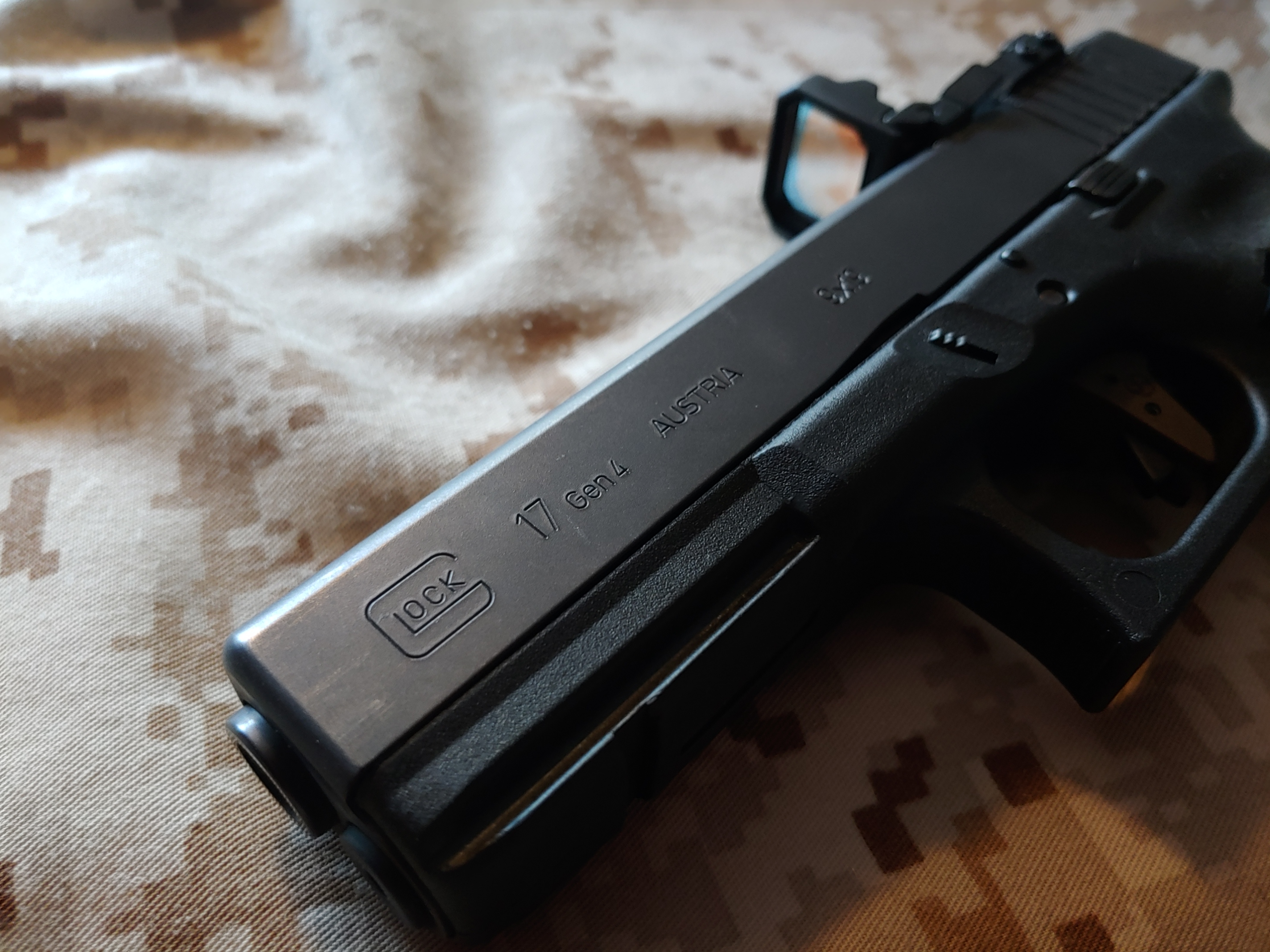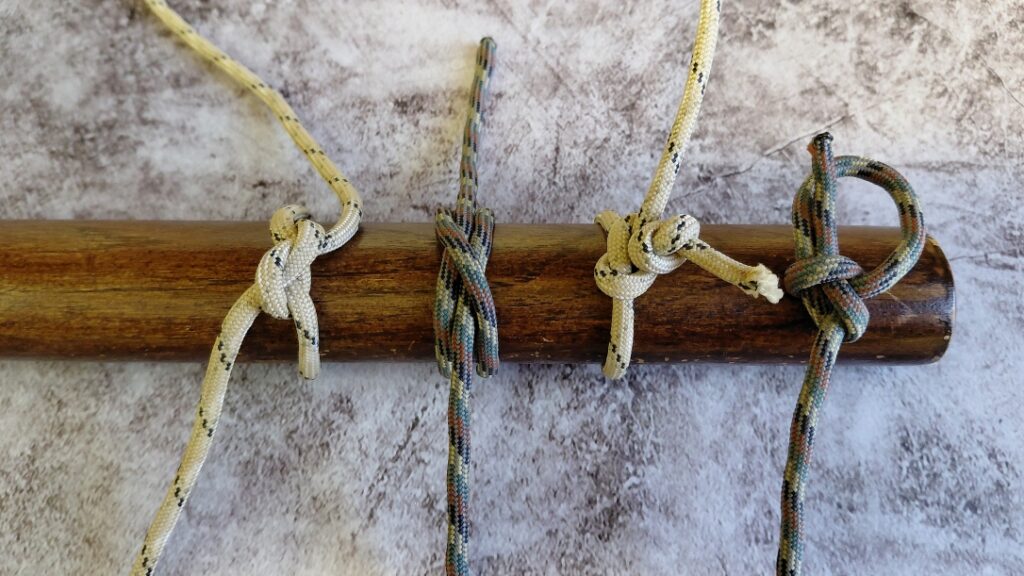I’ve learned never to be a first line adopter of a gun, a video game console, or really any new piece of tech. I like to wait until all the bugs are ironed out. That’s how I felt with red dots on handguns. I wasn’t sure if the hype was worth the investment, the time to relearn how to sight in, or the extra cost associated with a red dot on a handgun.
Then the Glock MOS system premiered.
I didn’t want to spend money on an optic and milling a slide to accommodate said optic and then not really like or see the point of a combative red dot handgun. The Glock MOS offered me a pre-milled slide with interchangeable plates that would allow me to attach over a dozen different optics. I still waited and played squirrel in the road until I found a deal I couldn’t pass up. A combination Glcok 17 MOS and a Burris Fastfire for basically the price of a Gen 5 Glock 17.
Advertisement — Continue Reading Below
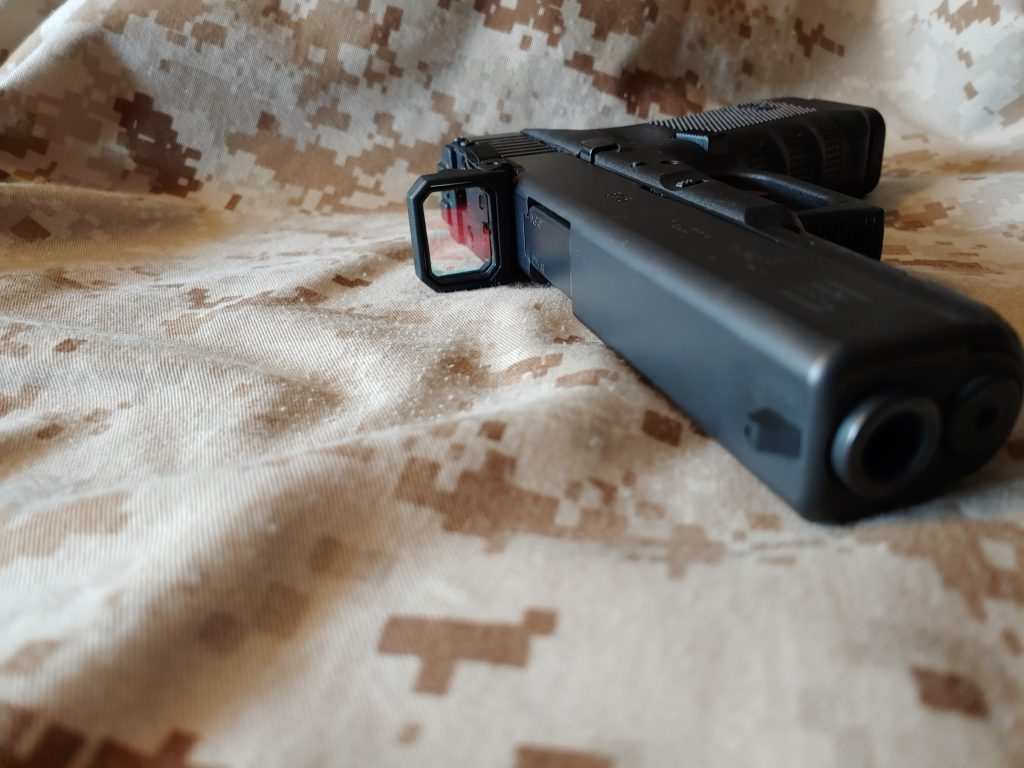
I snatched it up, rushed home to install the optic and immediately stripped the top screw that held the plate on. The screws Glock includes are garbage. I stripped it with the provided wrench just trying to loosen the top plate. Luckily we got it out and I ordered aftermarket Glock MOS screws which were much higher quality immediately for a grand total of 6 bucks.
Also the included sights are garbage, as all Glock OEM sights are. Sadly, the rear sight was pushed far enough to the left it was nearly hanging off the side. It’s an annoying detail but they were soon replaced anyway. I got the Fastfire 3 installed onto my Glock MOS and was happy to hit the range.
Advertisement — Continue Reading Below
Inside the Glock MOS
The Glock comes with 4 different plates that mount to the milled slide. You have to match the plate to your optic and several optics are compatible with the plates. This includes optics from Burris, Trijicon, Meopta, Docter, Vortex, and more. Interchanging the plates is easy and you should certainly Loc Tite them down once installed.
The MOS system does offer more points of failure compared to a purpose built milled slide, and does hold the optic higher. If I was a police officer or soldier I would get a purpose milled slide for duty use. For me, this worked.
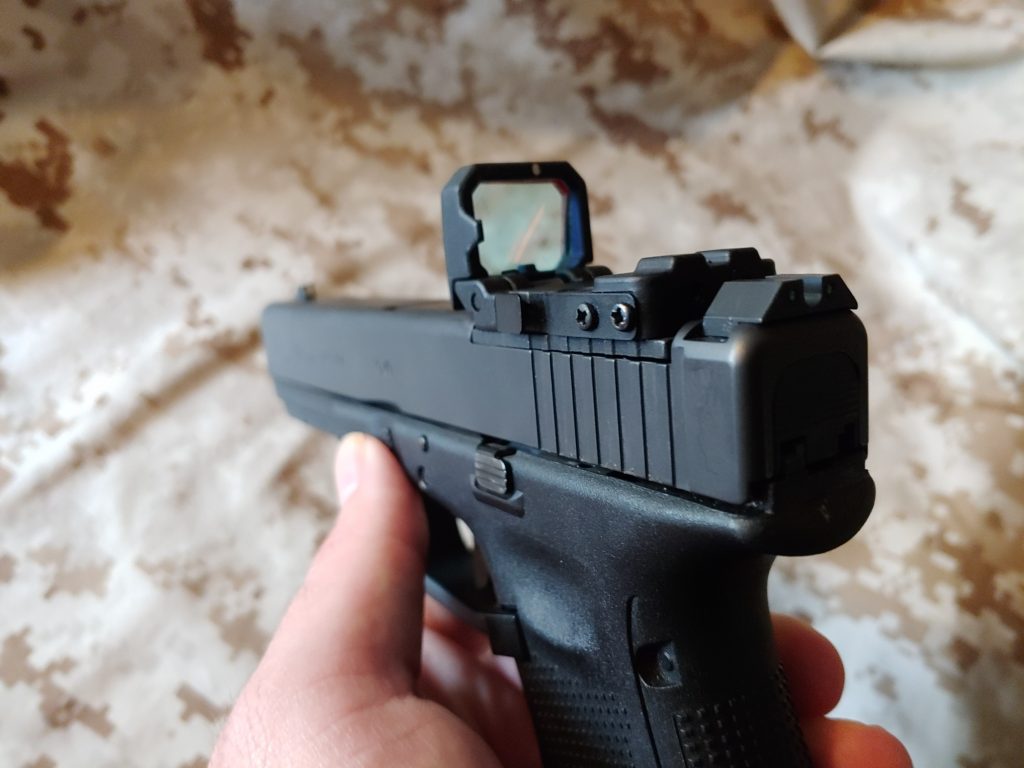
Advertisement — Continue Reading Below
The Fast Fire (not pictured) installed easily enough. The rear iron sight sits behind the optic but is too short to cowitness, so you’ll need suppressor height sights to do that.
Other than that this is a standard Gen 4 Glock 17. Complete with terrible finger grooves, slide biting slide, weird grip angle, ultra small slide lock, and all. As you can tell not a huge fan of the ergonomics. They work, and their problems won’t cause you to miss your target. That’s all you.
I like to say that the Glock is a high five and guns from SIG, HK, and CZ are handshakes.
Advertisement — Continue Reading Below
Bang Bang Time
This isn’t an article on red dots as a concept but its a review the Glock MOS system and the Glock 17 it’s built into. Outside of the Glock’s rough ergonomics the gun runs and that’s a big reason why Glock is so successful as a company.
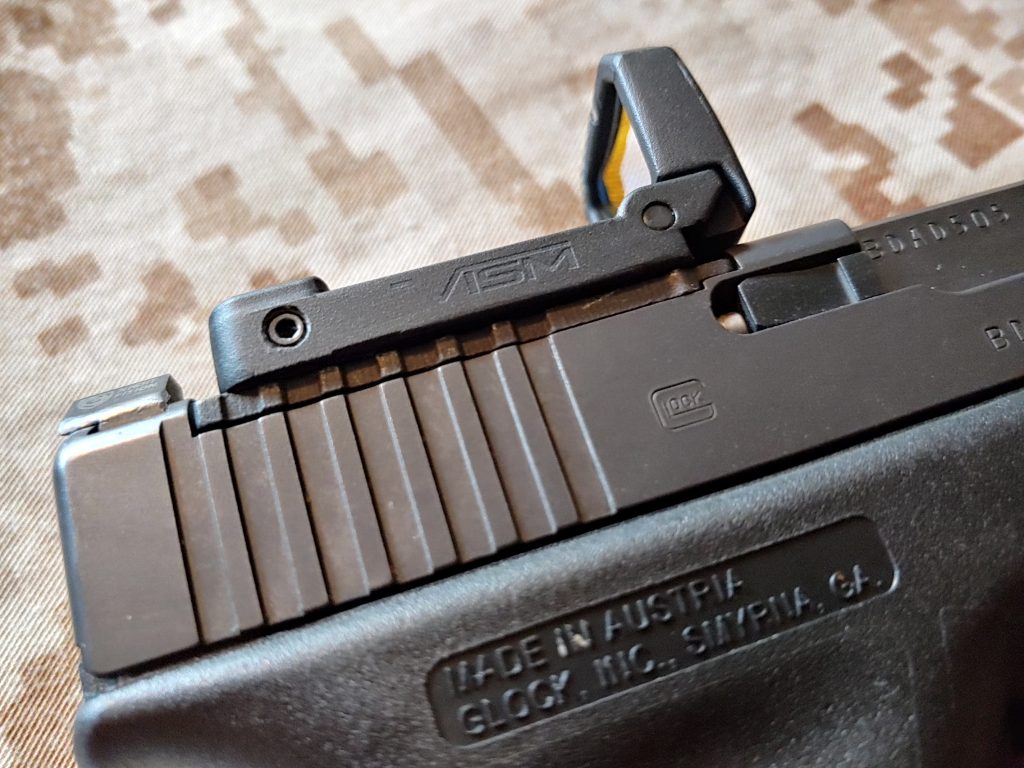
Their guns freakin’ work and work well. After owning the gun for nearly a year now its been used for all sorts of tasks. This includes as a carbine, a braced pistol, and to test a wide variety of magazines and ammunition. The slide was even tossed onto a Polymer80 Glock frame a friend made for testing and it all worked.
Advertisement — Continue Reading Below
Steel, aluminum, brass, and even zinc cased ammo has been through this gun. It’s one of my major go tos for part swapping and experimenting when reviewing parts.
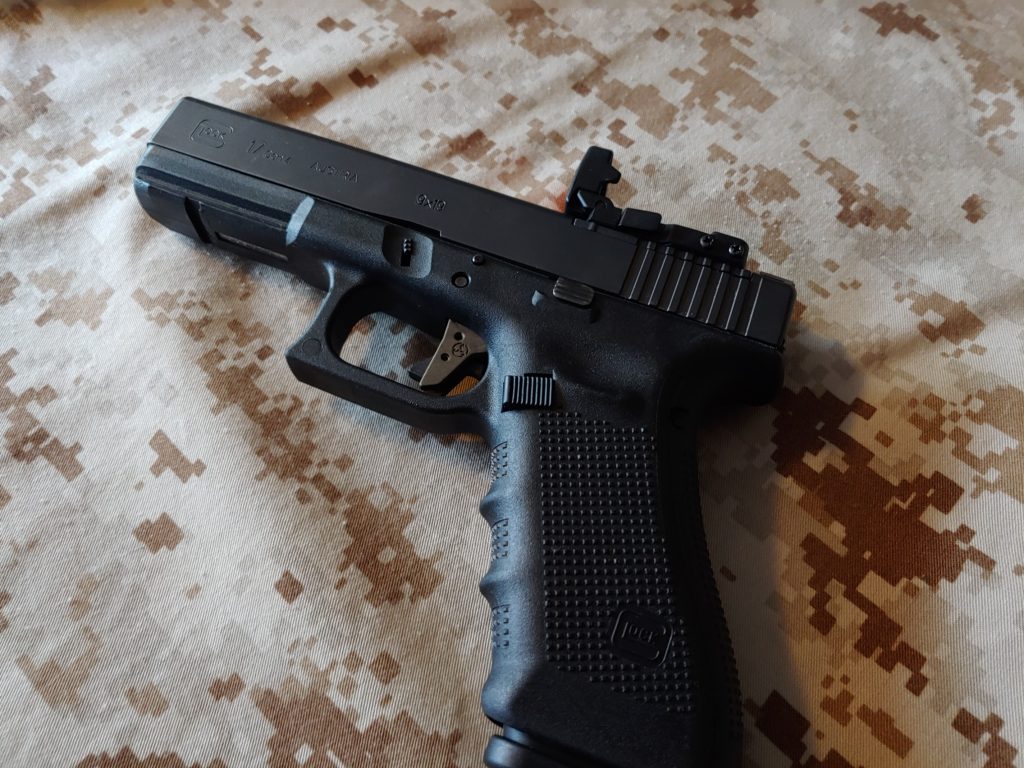
When the optic is properly loc-tited it doesn’t move. I did read that the Glock screws included with the gun are too short. These short screws cause the optics to come loose. I wish I hadn’t tossed them out in the first place to test the stock options. My aftermarket screws are slightly longer and are a very solid fit.
Advertisement — Continue Reading Below
Trigger and Recoil
Glock’s triggers are great duty gun triggers. The trigger has a very positive reset and short travel. It’s not perfect, and I did replace my trigger shoe with a Suarez International model. Same pull and weight, just a smoother overall trigger.

The trigger is consistent, and something can be said for that. With the addition of an optic, I could really back off and ring steel for an incredible distance with little practice. The dot moves quite a bit but this forces you to really exercise proper fundamentals. Plus it’s easier to see smaller targets with the dot than a front sight.
Advertisement — Continue Reading Below
The Glock 17 is a full sized 9mm gun so recoil is pleasant and plenty controllable. The optic obviously reciprocates with the slide but it is very easy to get back on target. Shoot, find the dot, shoot again. With practice you can develop a fast sight picture and trigger pull. Combined with the gun;s low recoil and you can play the song of your people without missing a note.
Accuracy Is King
Without a doubt, after some practice, the dot was the more accurate option. At close and extended ranges I produced smaller groups with the red dot than the iron sights. The Glock MOS combined with the Burris Fastfire 3 has been a winning combination. I’m currently messing around with the NC Star VISM Flipdot so you’ll see it mounted here.
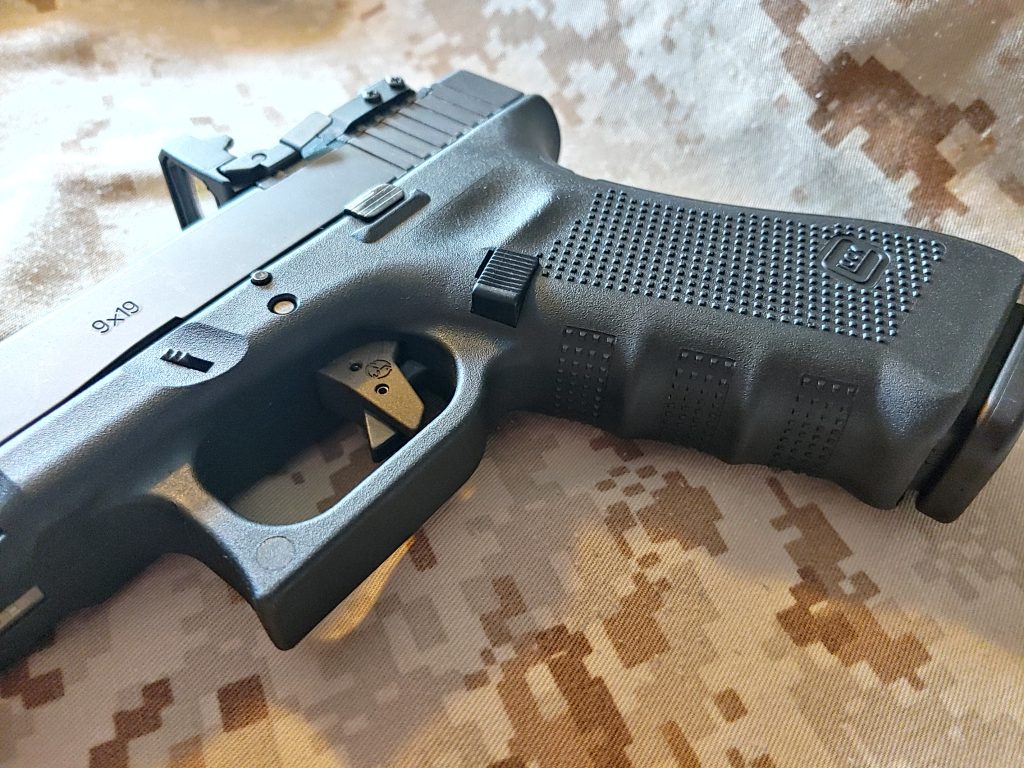
Advertisement — Continue Reading Below
I found the Glock MOS to be plenty stable with aftermarket screws and the optic never moved once Loc-Tited properly. The design isn’t perfect and the optic is a little higher than most. However, this is a much more affordable option than a milled slide.
There are some trade-offs, but I can’t see those trade-offs being worth the 150 dollar mill job, along with the wait, and hope the guy is good with his tools. The MOS system offers shooters a reliable and easy way to add an optic to their gun without spending much more than your average Glock.
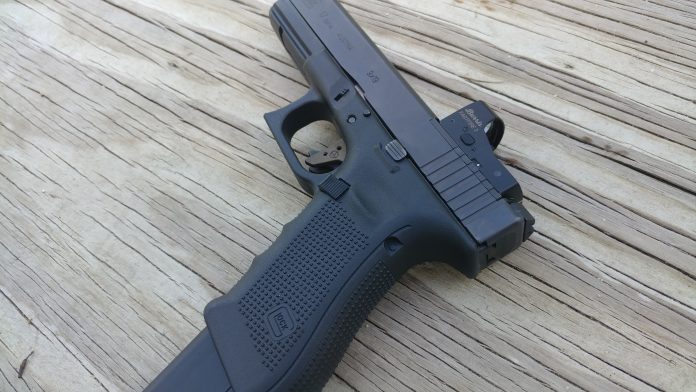
The Glock MOS series has moved on to the Gen 5 series of guns now, which I feel ergonomically are much more superior. However, the Gen 4 price difference may make a big difference for some. The Gen Glock MOS system is wel ldesign and functional. I have some minor gripes but a Glock is a Glock and gun is easy to use, reliable, accurate, and infinitely modular.
